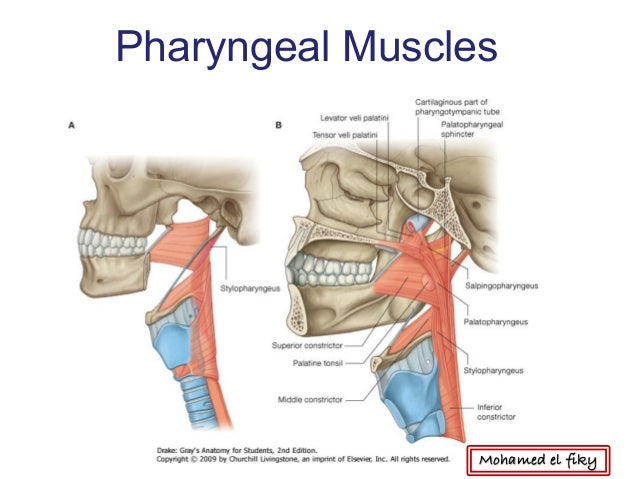
The mucosal surfaces lining the pharynx derive from endoderm, the muscles, and bones pertinent to swallowing derive from mesoderm with coordination from the neural crest, and ectoderm gives rise to glands of the mouth, tooth enamel, and the nerves involved in the neural regulation of the sequence. These adult structures form via involvements from all three primary germ cell layers and derive from one or more of the six pharyngeal arches, with arch five involuting early in development. Around this time, the branchial or pharyngeal arches begin to form and will later give rise to the mature adult structures pertinent to swallowing. The structures involved in the physiological act of swallowing develop early in fetal life, around the beginning of week four of embryological development. The vocal folds also adduct, and the glottis closes the muscles and nerves involved in these steps will be discussed in greater detail later. This cessation in breathing usually occurs toward the end of expiration and helps prevent the aspiration of consumed material. The protection of the airway is essential to this stage and occurs by the induction of a swallowing apnea. This stage starts when the consumed bolus makes its way to the palatoglossal arch. The first irreversible step in swallowing, the pharyngeal stage, occurs next and is categorized by a rapid phase of muscle contraction to propel the bolus through the upper esophageal sphincter and into the esophagus. Contrast this with consuming liquids as the pharyngeal stage begins throughout the oral propulsive stage. The bolus is then propelled down the palate by the tongue toward the oropharynx this is the oral propulsive stage. Immediately before the initiation of a swallow, the anterior tongue rises to meet the hard palate as the posterior tongue drops and opens the oropharynx.
Inferior pharyngeal constrictor usmle free#
This seal does not form between the palate and tongue during the mastication of solid foods, and therefore free communication between the oral cavity and oropharynx is preserved. When drinking liquids, the posterior tongue rises to meet the soft palate to ensure a proper seal, preventing leakage of liquid oral cavity contents into the oropharynx before the swallow initiates voluntarily. The oral preparatory stage begins when food or liquid is consumed through diet and enters the oral cavity. The function of each structure involved in the swallow summarizes into two main themes: propulsion of the bolus toward the stomach and protection of the airway. The anatomy of the structures involved in deglutition will be discussed further in this article.

The oral and pharyngeal stages of swallowing share anatomy with the respiratory tract, so protection of the airway is of utmost importance. The location of the food bolus defines each of these phases as it descends towards the stomach. The oral phase further divides into an oral preparatory phase and an oral propulsive phase. Deglutition in humans can be of three distinct phases: oral phase, pharyngeal phase, and esophageal phase, of which the first one is voluntary, and the other two are reflex actions. It is the starting point for the peristaltic transport of food to the stomach.

Swallowing sounds like a simple physiological human function, but it is a complex, multifaceted process involving a variety of muscles and nerves. Deglutition or swallowing is an innate function.


 0 kommentar(er)
0 kommentar(er)
